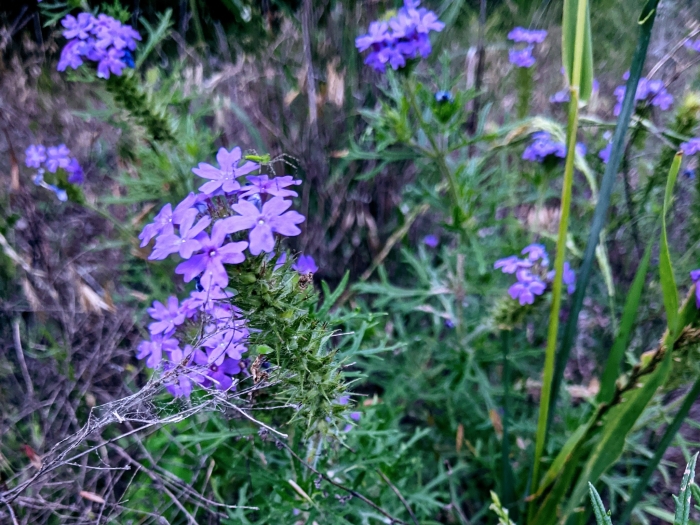Dakota Mock Vervain
(Glandularia bipinnatifida)
Dakota Mock Vervain (Glandularia bipinnatifida)
/
/

spookysqueeek
CC BY 4.0
Image By:
spookysqueeek
Recorded By:
Copyright:
CC BY 4.0
Copyright Notice:
Photo by: spookysqueeek | License Type: CC BY 4.0 | License URL: http://creativecommons.org/licenses/by/4.0/ | Rights Holder: spookysqueeek | Publisher: iNaturalist | Date Created: 2021-05-10T20:01:23-07:00 |
















































Estimated Native Range
Summary
Glandularia bipinnatifida, commonly known as Dakota Mock Vervain, is a perennial herb that is often treated as an annual in cultivation. It is native to open areas such as prairies, plains, and roadsides, as well as disturbed sites in the Southern and Southwestern United States, Mexico, and Central America. This plant typically reaches a modest height of 6–12 inches (15–30 cm) with a similar spread, forming a low mound of foliage topped with clusters of showy flowers.
Dakota Mock Vervain is valued for its long blooming period, with pink or purple flowers that appear primarily in the spring and may continue throughout the growing season if conditions are favorable. The finely dissected leaves, with segments 1–4 mm wide, add a delicate texture to garden plantings. It is an excellent choice for rock gardens, borders, and as a ground cover due to its low stature and sprawling habit. Dakota Mock Vervain thrives in full sun and is drought-tolerant, making it suitable for xeriscaping. It prefers well-drained soils and can tolerate a range of soil types, from sandy to loamy. While it is generally easy to maintain, it can be susceptible to root rot in overly moist conditions. This species is not known for aggressive roots or significant disease problems, but it can self-seed prolifically, which may be considered invasive in some areas.CC BY-SA 4.0
Dakota Mock Vervain is valued for its long blooming period, with pink or purple flowers that appear primarily in the spring and may continue throughout the growing season if conditions are favorable. The finely dissected leaves, with segments 1–4 mm wide, add a delicate texture to garden plantings. It is an excellent choice for rock gardens, borders, and as a ground cover due to its low stature and sprawling habit. Dakota Mock Vervain thrives in full sun and is drought-tolerant, making it suitable for xeriscaping. It prefers well-drained soils and can tolerate a range of soil types, from sandy to loamy. While it is generally easy to maintain, it can be susceptible to root rot in overly moist conditions. This species is not known for aggressive roots or significant disease problems, but it can self-seed prolifically, which may be considered invasive in some areas.CC BY-SA 4.0
Plant Description
- Plant Type: Herb
- Height: 0.5-1 feet
- Width: 0.25-0.5 feet
- Growth Rate: Moderate
- Flower Color: Purple
- Flowering Season: Spring, Summer, Fall
- Leaf Retention: Deciduous
Growth Requirements
- Sun: Full Sun
- Water: Low, Medium
- Drainage: Fast, Medium
Common Uses
Bee Garden, Bird Garden, Butterfly Garden, Deer Resistant, Fragrant, Groundcover, Hummingbird Garden, Low Maintenance, Potted Plant
Natural Habitat
native to open areas such as prairies, plains, and roadsides, as well as disturbed sites in the Southern and Southwestern United States, Mexico, and Central America
Other Names
Common Names: Prarie Verbena, Dakota Vervain, Moradilla
Scientific Names: , Glandularia bipinnatifida, Verbena bipinnatifida,
GBIF Accepted Name: Glandularia bipinnatifida (Schauer) Nutt.